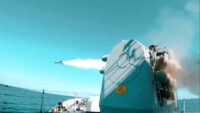After the 73-day face-off in Doklam between India and China in 2017, China started strengthening its airbase adjoining the Line of Actual Control (LAC) with the People’s Liberation Army Air Force (PLAAF) deploying fighter jets at Nagri Gunsa Airport (Ngari Gunsa), just 200 km from Pangong Tso in Ladakh.
Defence experts associated with China believe that there are 14 airfields in total in three sectors–northern, central and eastern. Recently, a report by the US Air Force’s China Aerospace Studies Institute (CASI) has revealed that China has deployed 36 aircrafts at the Hotan airbase of Xinjiang in addition to Nagri Gunsa Airport, including 24 J-11, six J-8 fighter, two Y-8G transport aircraft, two KJ-500 airborne early warning aircraft, two MI-17 helicopters and CH-4 drones.
According to experts, China’s Hotan, Yarkant and Kashgar air bases are close to Ladakh and if there is a war, China can use them against India. This year, a report by Howard Kennedy School’s Belfer Center for Science and International Affairs said, “The most important PLAAF forward air bases and airspace near the Indian border areas, which will be important in combat operations, are located at Hotan, Lhasa / Gongagar, Nagri-Gunassa and Jigze., where China’s fighter jets are stationed.”
“Under the radius of these air bases and airspace are Kashmir, Northern India and North-East India. There is no blast pen the airbases of Ngari-Gunsa and Xigaze, so the Indian Air Force could destroy fighter jets deployed at these airbases in China during retaliation. At the Lhasa airbase, China has recently designed a rigid blast pen to protect up to 36 aircraft.
China has a total of around 2,100 fighter jets, including J-10, J-11 and SU-27.






